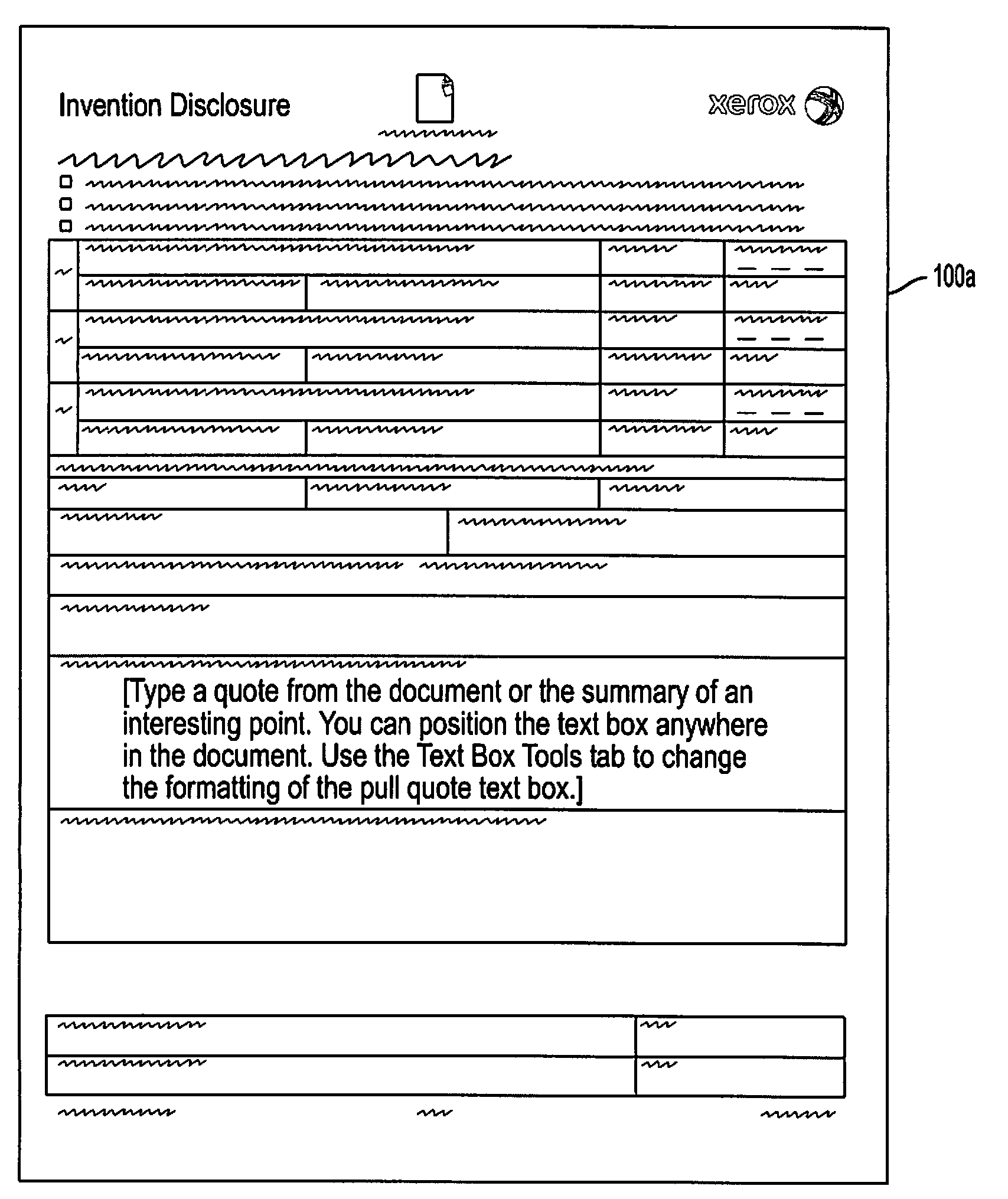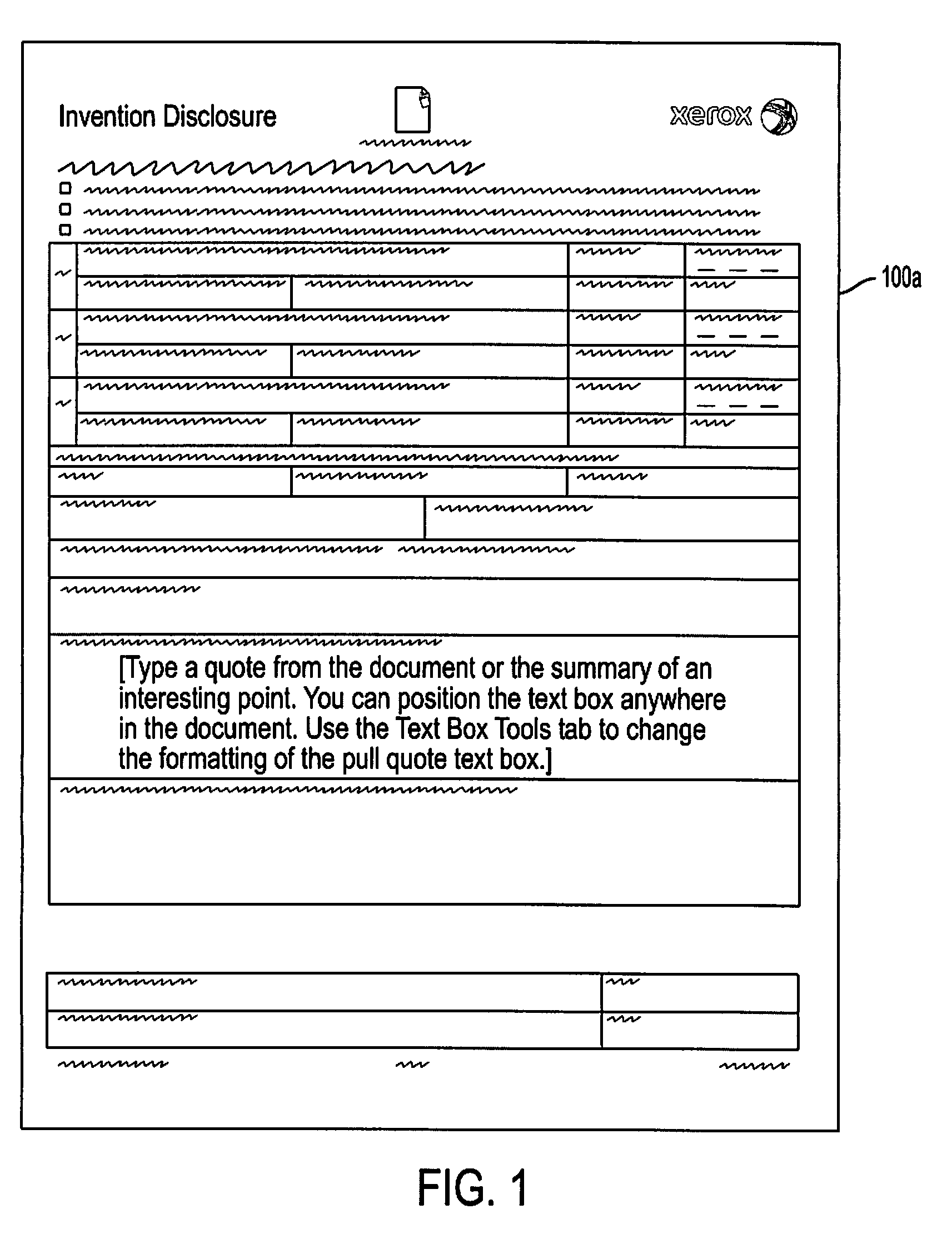Method and system for document image classification
a document image and classification technology, applied in the field of document image classification systems, can solve the problems of 1-2 pages per second, affecting the quality of images, and consuming a lot of time and resources,
- Summary
- Abstract
- Description
- Claims
- Application Information
AI Technical Summary
Benefits of technology
Problems solved by technology
Method used
Image
Examples
Embodiment Construction
[0017]Embodiments of the presently disclosed image categorization system and method will now be described in detail with reference to the drawings in which like reference numerals designate identical or corresponding elements in each of the several views.
[0018]The present disclosure relates to the image based analysis of scanned images to classify document types. In embodiments of the present disclosure, attributes or features of input images are automatically learned by an image classification engine (“ICE”) through use of an efficient connected component analysis to generate training data or training models (“models”). Other scanned input images are compared with the models and classified based on the comparison. The ICE is a fast multi-facet machine learning classifier that is configured to classify documents based on visual appearance. The ability to classify documents based on visual appearance negates the need for optical character recognition (“OCR”). Once a model is generate...
PUM
 Login to View More
Login to View More Abstract
Description
Claims
Application Information
 Login to View More
Login to View More - R&D
- Intellectual Property
- Life Sciences
- Materials
- Tech Scout
- Unparalleled Data Quality
- Higher Quality Content
- 60% Fewer Hallucinations
Browse by: Latest US Patents, China's latest patents, Technical Efficacy Thesaurus, Application Domain, Technology Topic, Popular Technical Reports.
© 2025 PatSnap. All rights reserved.Legal|Privacy policy|Modern Slavery Act Transparency Statement|Sitemap|About US| Contact US: help@patsnap.com



